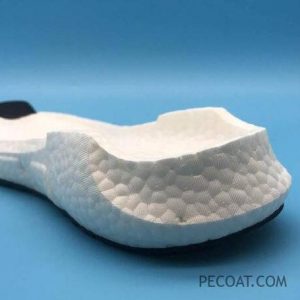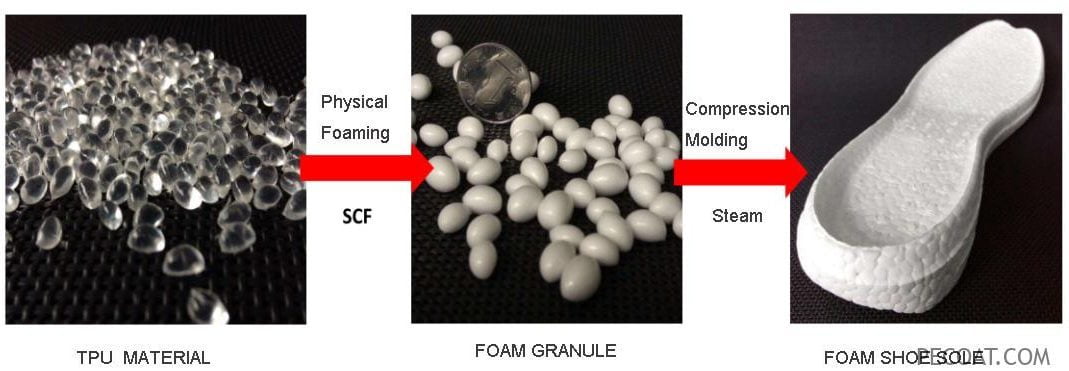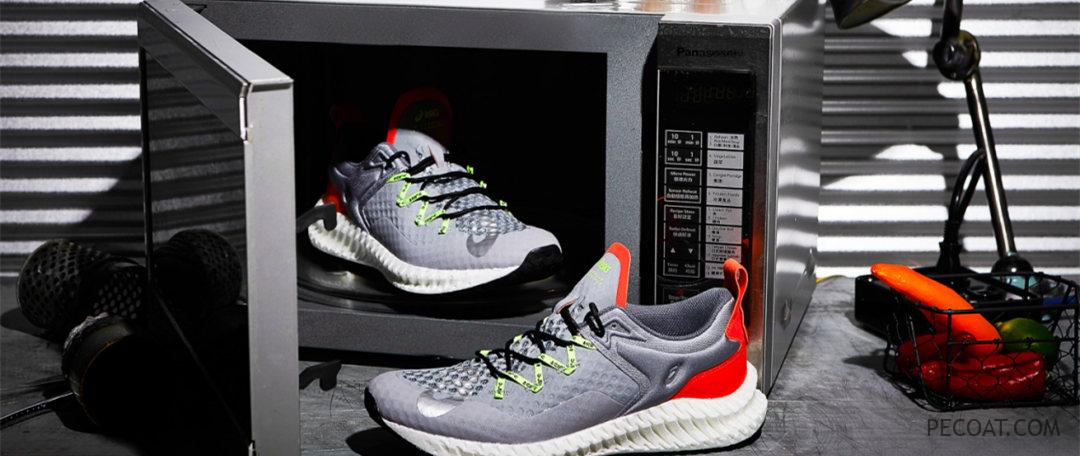ETPU Steam Heating Molding VS Microwave Heating Molding

ETPU, which stands for Expanded Thermoplastic Polyurethane Elastomer, originated from BASF in Germany in 2007. It is produced by using TPU resin as raw material and employing physical foaming technology to develop non-crosslinked TPU foam beads material (ETPU). Each TPU particle expands like popcorn, forming elliptical shapes with micro-closed bubbles inside, which is why ETPU is often referred to as “popcorn”.
ETPU exhibits excellent resilience and cushioning properties, making it widely used in footwear, plastic tracks, lightweight tires, and various protective products. As the application of ETPU continues to be explored, its molding processes are also being innovated and improved. The traditional molding process involves steam heating, but there are now ETPU materials available in the market suitable for microwave processing.
ETPU Steam Heating Molding Process
Currently, the common method used in the market for secondary foaming of ETPU is steam heating molding. Firstly, ETPU particles are loaded into the mold, and then steam heating is applied to trigger the secondary foaming process. This allows the adjacent ETPU particles to fuse together. Afterward, the mold is cooled down to complete the molding process.


ETPU Microwave Heating Molding Process
This process utilizes microwave heating based on the thermoplastic nature of ETPU. ETPU particles are loaded into the mold and placed inside a microwave oven. After a short period of time (around 30 seconds), the ETPU particles are partially melted and fused together. Once the mold is opened, the product can be obtained.

According to information available, the “MICROFLUX” series, consisting of six different styles, has been launched in countries such as Japan and the United States. As stated on the official website of Asics, the “MICROFLUX” series is manufactured using the newly developed microwave molding technology, allowing for the midsole to be molded in approximately 30 seconds. Compared to the use of Asics’ standard technology, it reduces energy consumption by approximately 50%, making it a truly sustainable footwear option.

Comparison of Two ETPU Molding Processes
Heating Method
ETPU Steam heating involves circulating water vapor through the mold, allowing the heat to be conducted to the surface of ETPU particles. It is a form of heating through physical heat conduction. Microwave heating, on the other hand, utilizes radiation to penetrate and evenly heat the ETPU particles. It is a form of heating through energy conversion via radiation.

Process Differences
In steam molding, the material is injected into the mold using a material gun, and then heated with water vapor. The mold is cooled with water and opened intermittently.
In microwave molding, the mold is filled and then heated using microwave radiation. It can be cooled using air or other methods, and multiple sets of molds can be opened continuously.
In overall comparison, steam molding requires a large amount of water vapor. Even if water can be recycled, there is still a waste of water resources. Microwave molding, on the other hand, only requires filling the mold and placing it in a microwave for heating, cooling, and opening the mold. It is relatively more energy-efficient.
Mold Differences
In steam molding, heat is conducted through water vapor. When designing the mold, consideration needs to be given to the direction of steam flow and the material used for making the mold. This imposes certain limitations on the structure and appearance of the mold, and materials such as thermally conductive aluminum or copper molds are commonly used.
In microwave molding, heat is generated through radiation penetration. When designing the mold, only the issue of mold opening and closing needs to be considered, allowing for more design flexibility. Materials that do not absorb microwaves are used for the mold.
Final Product Properties
Products made using both processes fundamentally use ETPU material, so their tear strength and rebound properties will not differ significantly. However, products made using microwave molding may have a slightly higher density. To address this issue, the product structure can be designed to reduce weight, such as incorporating hollow designs in the outsole.
Furthermore, for complex designs, microwave molding is more capable than steam molding in replicating the surface texture of the mold. It can create designs with significant variations in depth and, combined with a relatively smooth surface, better meets the design freedom requirements for footwear materials.
ETPU Steam Heating Molding VS Microwave Heating Molding

Leave a Reply